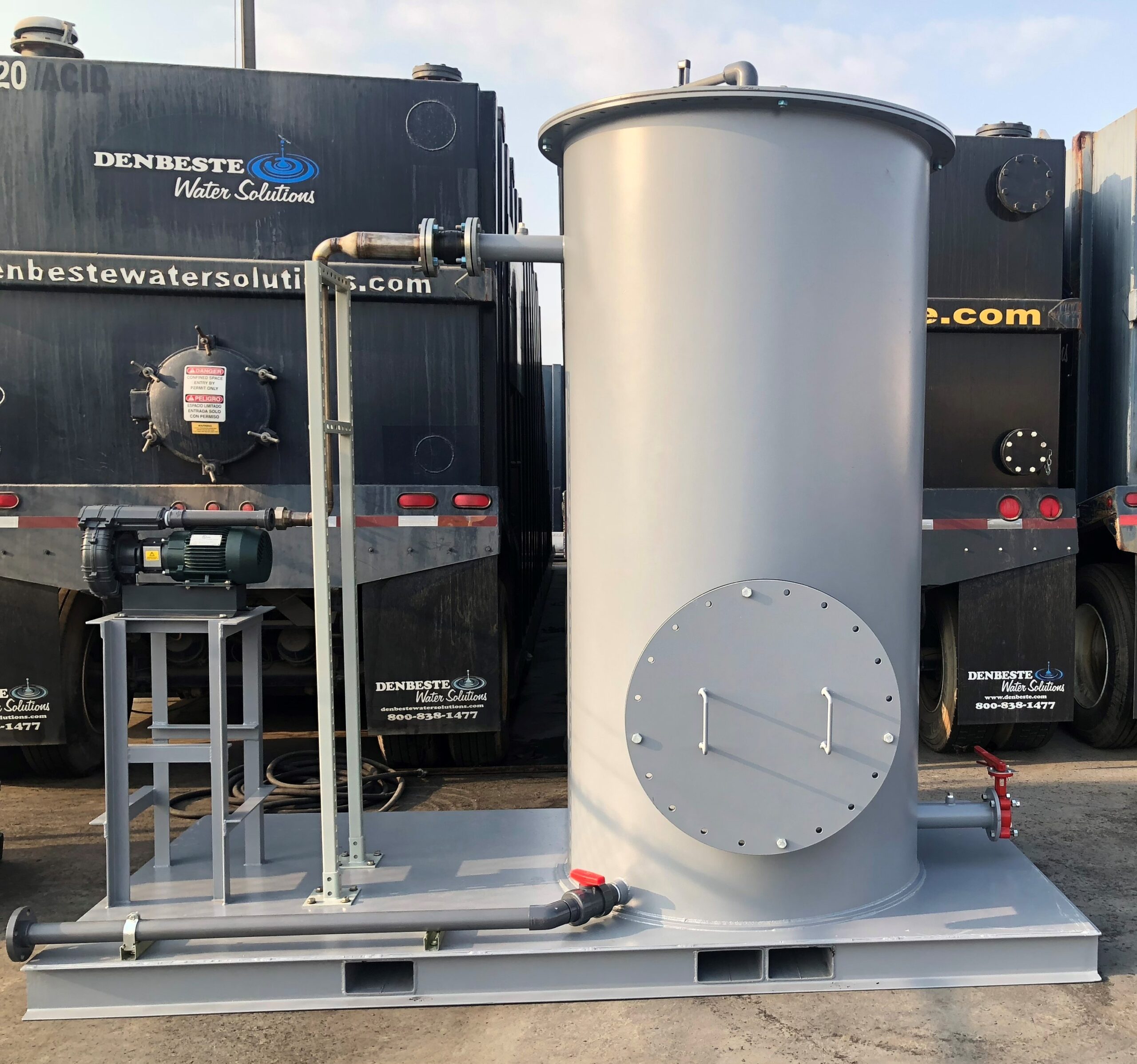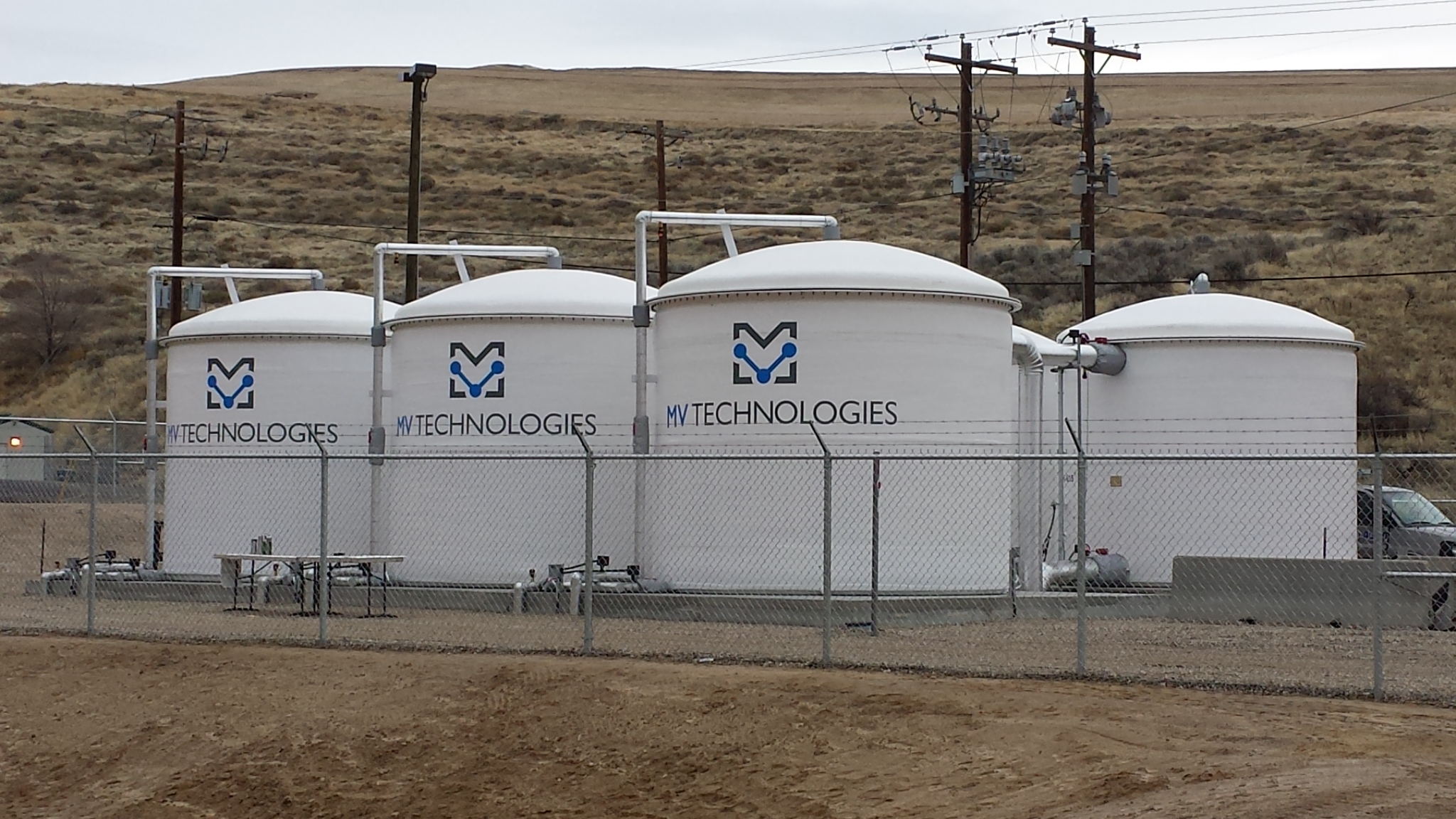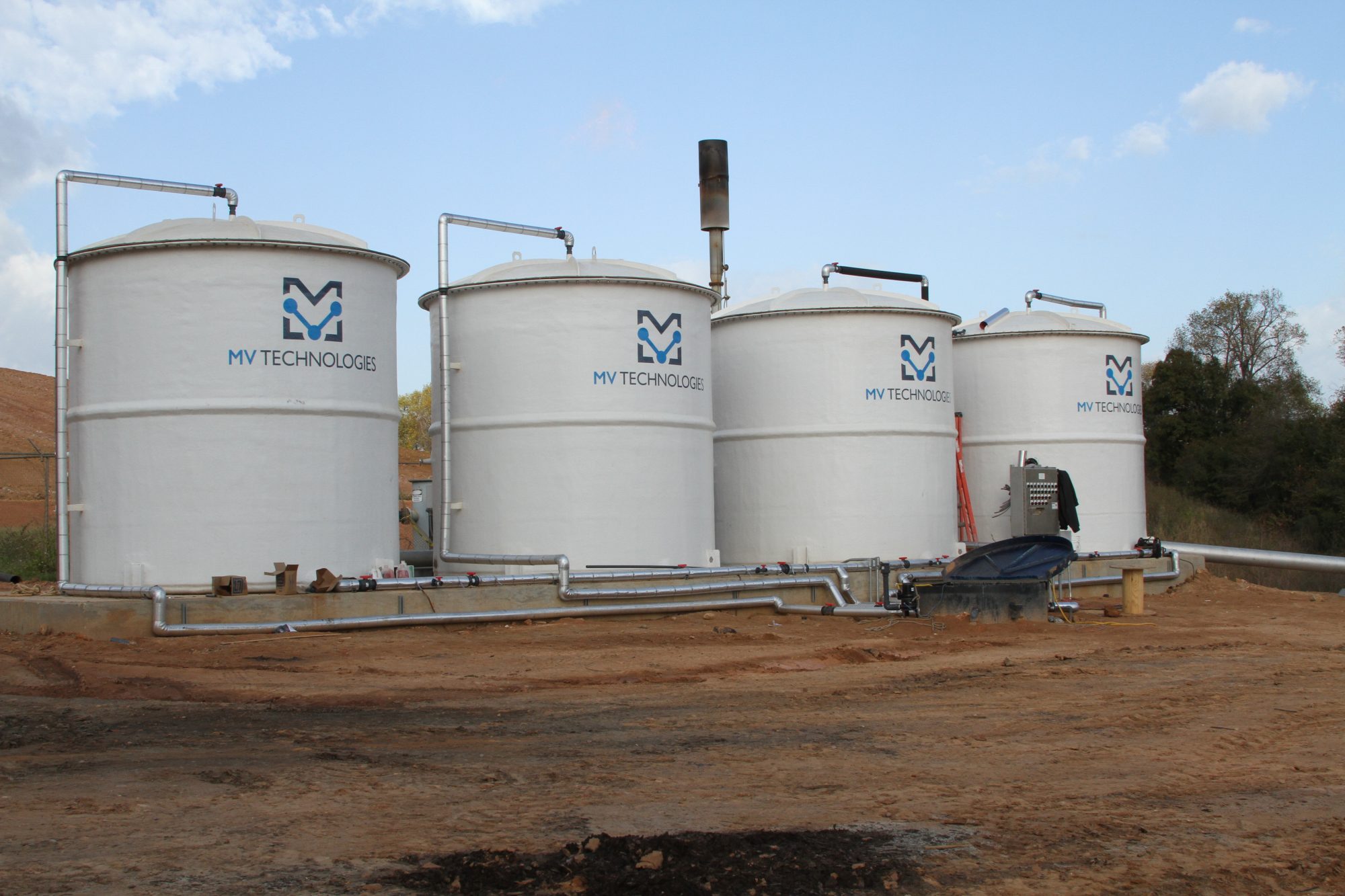Anaerobic Digestion Biogas
H2S Treatment for Anaerobic Digestion Biogas
Anaerobic digestion biogas is a process that converts organic waste into biogas composed of methane and carbon dioxide. This biogas can then be used as a clean energy source. However, the biogas produced from anaerobic digestion can contain high levels of hydrogen sulfide (H2S), which is a toxic and corrosive gas. These treatments are necessary to remove the H2S from the biogas and make it safe to use.
There are a number of options for treating H2S in anaerobic digestion biogas systems. Chemical methods, such as the use of sulfite, can be used to remove H2S from the gas. Physical methods, such as the use of activated carbon, can also be used to remove H2S from the gas.
MV Technologies’ hydrogen sulfide removal systems treat biogas for emissions control and beneficial end-use in all forms of biogas processes on farms, at wastewater treatment facilities, and at large waste and industrial facilities.
We successfully partner with engineering firms, design & build companies, and end-users to help identify and design the right H2S removal solution for site-specific requirements from the common mixed reactor to dry anaerobic digestion to plug flow anaerobic digestion processes.

How Can MV Technologies Help Your Operation?
When choosing an H2S treatment solution for anaerobic digestion biogas, it is important to find one that is specifically designed for your application. Not all H2S treatment solutions are suitable for biogas, and it is important to make sure that the chosen method is capable of removing the H2S from the specific biogas product your operation is producing. Of course, MV Technologies has years of experience in designing these systems, and they are willing to help you in the selection and design process.
Additionally, it is important to ensure that the chosen H2S treatment solution is able to meet the requirements of your anaerobic digestion system. With the right H2S treatment solution, you can ensure that your biogas is safe to use and will perform optimally.
H2S can cause corrosion of metal parts in anaerobic digestion biogas systems, which can lead to problems with the system’s operation. H2S can also cause problems with the bacteria that are responsible for the decomposition of organic matter.
Our H2S removal solutions offer design flexibility and are often the most cost-effective and easy-to-operate technology for most AD biogas projects.
The production of H2S during anaerobic digestion is a complex biological and chemical process that is highly variable across various applications, even within a single digester.
Variations in feedstock source and consistency, temperature changes, and fluctuations in water chemistry can all have a significant impact on the quantity of H2S included in the biogas stream. These variations in H2S concentrations can present significant challenges to conventional biological systems.

Typical User Conditions
H2S concentrations in biogas from anaerobic digesters can range from highs of more than 20,000 ppmv to values of less than 100 ppmv. As noted above, the fluctuations around a mean value in any given digester can be significant. It is the variability in concentration that is one of the peculiar and critical elements to address in the design of an H2S removal system.
Additionally, in evaluating H2S treatment approaches, an important metric to consider is the Total Cost of Ownership (TCO).
The TCO includes capital costs such as the vessel size, pumps and installation costs, and the operating costs, largely determined by media life and resulting time between replacement — itself a function of biogas flow rate and H2S concentration. MV’s enhanced iron sponge (BAM) media is guaranteed to remove up to 13 pounds of H2S per cubic foot, one of the highest removal efficiencies in the industry.

What Are The Costs of this Type of System?
One of the most common questions that many of our clients have is how much an H2S treatment system will add to their operation’s bottom line. While these systems are often required by federal, state, or local regulations, they can have several other benefits as well.
Generally, we recommend that our clients consider the total cost of ownership of these systems. While it is true that they often have higher upfront costs than other systems, their reduced maintenance and ongoing upkeep costs are significantly lower. Be sure to consider:
- Power costs – an increase in pressure drop can result in an increase in power costs
- Lost Revenue due to system downtime – maintenance/media changes
- Replacement of proprietary nutrients and/or chemical/caustic
- The costs of testing for warranty or regulatory requirements
- Operator attention time – it is not “free”
If you’re looking to remove H2S from your biogas products, MV Technologies has a solution for you. Contact MV Technologies today and we’ll be happy to assess your site’s needs and develop and appropriately sized solution for your operation.
Frequently Asked Questions
Biogas is a renewable energy source typically obtained through the anaerobic decomposition process involving organic waste. When produced, biogas primarily consists of CO2, or carbon dioxide, alongside CH4, or methane. However, trace amounts of additional gases, including H2S or hydrogen sulfide, are often detected in the biogas itself.
Common industries involved in producing biogas include wastewater treatment facilities, waste management plants (industrial and landfills included), and agricultural farms. Food and beverage processing facilities are also known for their increased production of biogas, which requires the removal of H2S. Any industry in which biogas is also converted into heat, electricity, or fuel should also consider H2S removal systems and solutions.
Yes, H2S is considered a hazardous, corrosive, toxic emission that not only contributes to the wear and tear of surrounding gas lines and equipment in a particular location but can also pose a serious health risk to the environment. Respiratory, digestive, and neurological symptoms may begin to appear in those who have experienced prolonged exposure to H2S.
As organic material begins to initially digest and decompose, also known as aerobic digestion, H2S concentration levels will likely be the highest. Concentrations will be the highest when the surrounding environment also contains increased levels of sulfur-based organic material. Fluctuations are to be expected based on the surrounding environment, composition of the organic material, humidity, temperature, and equipment in use.
Removing H2S from biogas can be done via multiple methods, depending on the specifics of a particular location and the industry producing biogas. Chemical absorption, physical adsorption, and biological treatments are all solutions that may be considered to assist with the removal of H2S from biogas. Chemical absorption solutions utilize chemicals such as Sulfite to neutralize H2S, while physical adsorption utilizes iron sponge (or B.A.M. iron sponge) along with activated carbon to neutralize H2S in biogas. With biological treatments, the use of biofilters or even biotrickling filters is common.
Removing H2S from biogas has numerous health, environmental, and efficiency benefits. Eliminating H2S from biogas will ensure you are complying with local and federal regulations, especially as they pertain to the surrounding environment. Additionally, the removal of H2S will enhance the quality of the biogas itself while reducing odors and emissions of potentially toxic or hazardous gas into the atmosphere. H2S removal from biogas will extend the lifespan of equipment, as H2S is corrosive and can cause significant wear and tear on equipment without proper remediation and removal systems in place.
Yes, the concentration level of H2S in biogas will likely determine the type of system you need for your plant, facility, warehouse, or industrial location. Predictable fluctuations and monitoring are often required to determine which applications for H2S removal in biogas are appropriate for your facility or treatment plant.
In most cases, H2S levels can be measured in biogas with the use of unique H2S sensors and gas analyzers. This equipment provides ongoing data in real-time for accurate measurements of H2S in biogas, helping to determine which treatment process will be most effective for your needs.
